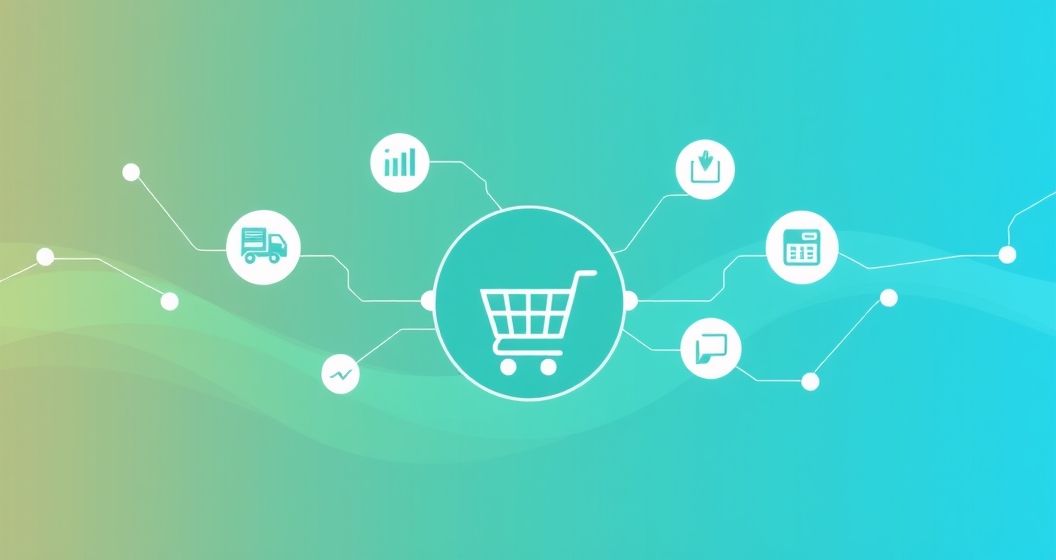Etsy, as a global marketplace for unique and creative goods, provides immense opportunities for artisans and small businesses. However, managing an Etsy shop effectively, especially as it scales, can become complex and time-consuming. This is where Etsy integrations emerge as powerful tools, designed to automate repetitive tasks, synchronize data across platforms, and ultimately enhance operational efficiency. Understanding and implementing these solutions can transform how sellers manage inventory, process orders, handle shipping, and even manage their finances, allowing more focus on creativity and customer engagement.
Understanding Etsy Integrations: Enhancing E-commerce Efficiency
Etsy integrations refer to third-party software applications or services that connect directly with an Etsy shop to extend its functionality and automate various business processes. These tools act as bridges, enabling seamless data flow between Etsy and other platforms like accounting software, inventory management systems, shipping carriers, or even other e-commerce websites. The primary goal is to minimize manual data entry, reduce the likelihood of errors, and free up valuable time for sellers, leading to a more streamlined and efficient operation.
1. Automating Inventory Management Across Sales Channels
Effective inventory management is critical for any e-commerce business, particularly for those selling unique or limited-edition items on Etsy. Integration tools designed for inventory control automatically synchronize stock levels across Etsy and any other platforms where products are sold. This real-time update capability prevents overselling, reduces the need for manual stock adjustments, and ensures accurate product availability for customers. Sellers can maintain a clear overview of their inventory, regardless of the sales channel.
2. Streamlining Order Processing and Fulfillment Workflows
The journey from a customer placing an order to receiving their package involves multiple steps. Order processing integrations automate many of these stages, from automatically importing new Etsy orders into a central dashboard to updating order statuses. This ensures that no order is missed, and the fulfillment process begins promptly. Such automation significantly reduces administrative burden and allows sellers to focus on packaging and preparing items for dispatch with greater efficiency.
3. Integrating for Efficient Shipping and Logistics
Shipping is often one of the most time-consuming aspects of running an Etsy shop. Shipping integrations connect an Etsy store directly with various postal services and private carriers, simplifying label creation and tracking. Features often include bulk label printing, automated tracking number uploads to Etsy, and even discounted shipping rates. This not only saves valuable time but also enhances customer satisfaction by providing timely shipping updates and accurate delivery estimates.
4. Synchronizing Financial Data for Accurate Accounting
Managing finances, tracking expenses, and preparing for tax season can be daunting for small business owners. Accounting integrations link an Etsy shop’s sales data directly to popular accounting software platforms. This synchronization automates the recording of transactions, income, and fees, providing a clear and accurate financial overview. Such tools are invaluable for maintaining precise financial records, simplifying bookkeeping tasks, and ensuring compliance.
5. Enhancing Customer Relationship Management (CRM)
Building strong customer relationships is vital for repeat business and positive reviews on Etsy. CRM integrations help sellers centralize customer data, manage communication, and track interactions. This allows for personalized follow-ups, targeted marketing efforts, and efficient resolution of inquiries. By understanding customer preferences and purchase history, sellers can provide a more tailored and memorable shopping experience, fostering loyalty.
6. Exploring Print-on-Demand (POD) and Dropshipping Integrations
For sellers utilizing print-on-demand or dropshipping models, integrations are indispensable. These tools seamlessly connect an Etsy shop with POD providers or dropshipping suppliers, automating the entire fulfillment process from order placement to direct shipping to the customer. This enables sellers to offer a wide range of products without holding any physical inventory, significantly reducing overhead costs and managing a broader catalog.
7. Expanding Reach with Website and E-commerce Platform Syncing
Many Etsy sellers also operate their own independent websites or sell on other e-commerce platforms. Integrating Etsy with these external channels ensures consistent product listings, synchronized inventory, and centralized order management. This multi-channel approach maximizes visibility and sales opportunities while maintaining a unified backend operation, preventing potential conflicts or discrepancies across different storefronts.
8. Leveraging Marketing and Social Media Integrations
Promoting an Etsy shop effectively requires a robust marketing strategy. Integrations can connect an Etsy store with social media scheduling tools, email marketing platforms, or analytics dashboards. This allows for automated social media posts featuring new listings, personalized email campaigns to past customers, and in-depth analysis of marketing performance. Such tools amplify promotional efforts and extend market reach.
9. Optimizing Product Listing and SEO Through Integrations
Creating and optimizing product listings for Etsy SEO can be time-consuming. Certain integration tools offer features for bulk editing listings, analyzing keyword performance, and suggesting improvements for titles and tags. These capabilities streamline the process of optimizing product visibility within Etsy’s search results, helping sellers attract more potential buyers to their unique offerings.
10. Key Considerations for Choosing the Right Integration Tools
Selecting the appropriate Etsy integration tools requires careful consideration of specific business needs and goals. Factors such as cost-effectiveness, ease of setup and use, compatibility with existing systems, and the specific features offered should be evaluated. It is crucial to choose solutions that genuinely simplify workflows and provide a clear return on investment, rather than adding unnecessary complexity to operations.
Optimizing Etsy Integrations: A Strategic Approach to Growth
Strategic utilization of Etsy integrations is paramount for sellers aiming to scale their businesses and improve efficiency. By automating mundane tasks across inventory, order processing, shipping, accounting, and customer management, sellers can significantly reduce operational overhead and minimize errors. These powerful tools not only free up valuable time for creative pursuits but also provide crucial insights and capabilities that foster sustainable growth. Embracing the right integrations transforms an Etsy shop into a highly organized and competitive e-commerce venture.






